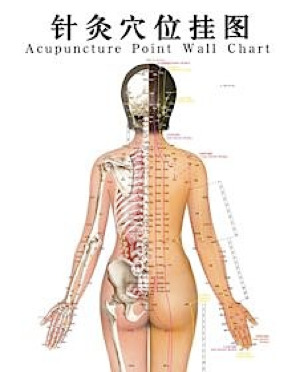 Scientists have taken another important step toward understanding just how sticking needles into the body can ease pain.
Scientists have taken another important step toward understanding just how sticking needles into the body can ease pain.
In a paper published Sunday in Nature Neuroscience, a University of Rochester Medical Center team identified a specific molecule as playing a key part in creating the effects of acupuncture in the body. Building on that knowledge, scientists were able to triple the beneficial effects of acupuncture in mice.
The research complements a rich, established body of work showing that in the central nervous system, acupuncture creates signals that cause the brain to churn out natural pain-killing endorphins.
The research focuses on adenosine, a natural compound known for its role in regulating sleep, for its effects on the heart, and for its anti-inflammatory properties. But adenosine also acts as a natural painkiller, becoming active in the skin after an injury to inhibit nerve signals and ease pain in a way similar to lidocaine.
In the current study, scientists found that the chemical is also very active in deeper tissues affected by acupuncture. The Rochester researchers looked at the effects of acupuncture on the peripheral nervous system – the nerves in our body that aren’t part of the brain and spinal cord.
The new findings add to the scientific heft underlying acupuncture, said neuroscientist Maiken Nedergaard, M.D., D.M.Sc., who led the research. Her team is presenting the work this week at a scientific meeting, Purines 2010, in Barcelona.
“Acupuncture has been a mainstay of medical treatment in certain parts of the world for 4,000 years, but because it has not been understood completely, many people have remained skeptical,” said Nedergaard, co-director of the University’s Center for Translational Neuromedicine, where the research was conducted.
“In this work, we provide information about one physical mechanism through which acupuncture reduces pain in the body,” she added.
To do the experiment, the team performed acupuncture treatments on mice that had discomfort in one paw. The mice each received a 30-minute acupuncture treatment at a well known acupuncture point near the knee, with very fine needles rotated gently every five minutes, much as is done in standard acupuncture treatments with people.
The team made a number of observations regarding adenosine:
* In mice with normal functioning levels of adenosine, acupuncture reduced discomfort by two-thirds.
* In special “adenosine receptor knock-out mice” not equipped with the adenosine receptor, acupuncture had no effect.
* When adenosine was turned on in the tissues, discomfort was reduced even without acupuncture.
* During and immediately after an acupuncture treatment, the level of adenosine in the tissues near the needles was 24 times greater than before the treatment.
Once scientists recognized adenosine’s role, the team explored the effects of a cancer drug called deoxycoformycin, which makes it harder for the tissue to remove adenosine. The compound boosted the effects of acupuncture treatment dramatically, nearly tripling the accumulation of adenosine in the muscles and more than tripling the length of time the treatment was effective.
“It’s clear that acupuncture may activate a number of different mechanisms,” said Josephine P. Briggs, M.D., director of the National Center for Complementary and Alternative Medicine at the National Institutes of Health. “This carefully performed study identifies adenosine as a new player in the process. It’s an interesting contribution to our growing understanding of the complex intervention which is acupuncture,” added Briggs, who is the spouse of co-author Jurgen Schnermann.
The paper includes three first co-authors: Nanna Goldman, technical associate Michael Chen, and post-doctoral associate Takumi Fujita. Other authors from Rochester include Qiwu Xu; medical student Tina Jensen; former student Wei Liu and former post-doctoral associate Yong Pei; assistant professors Takahiro Takano and Kim Tieu; and research assistant professors Weiguo Peng, Fushun Wang, Xiaoning Han, and Lane Bekar. Also contributing were Jiang-Fan Chen from Boston University and Jurgen Schnermann from the National Institute of Diabetes and Digestive and Kidney Diseases.
Funding for the work came from the New York State Spinal Cord Injury Program and the National Institutes of Health. (Source: URMC News)



















